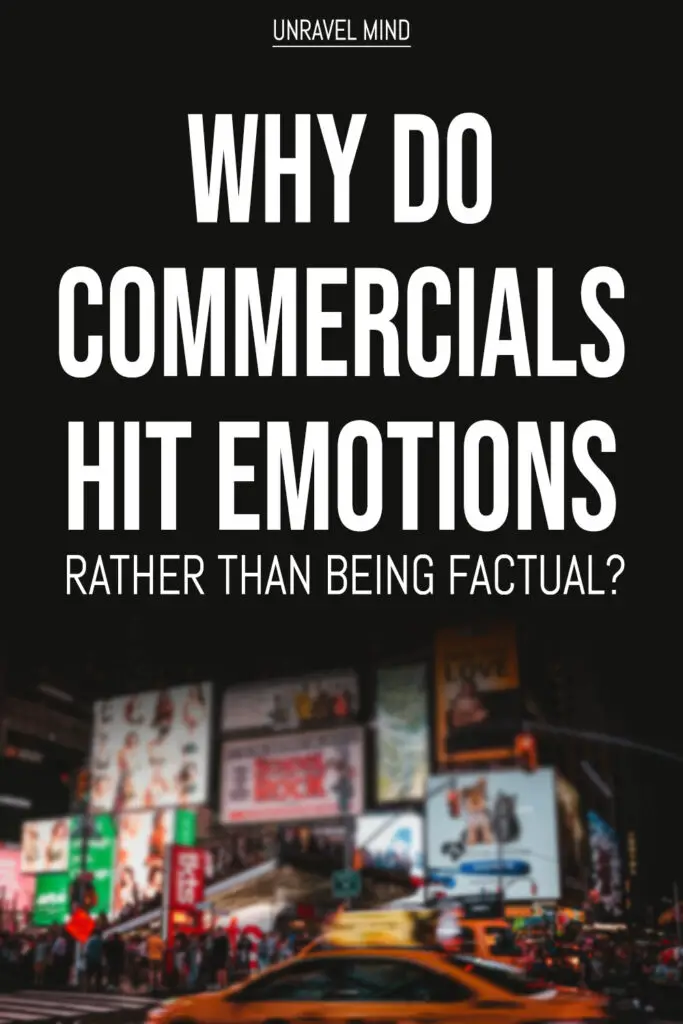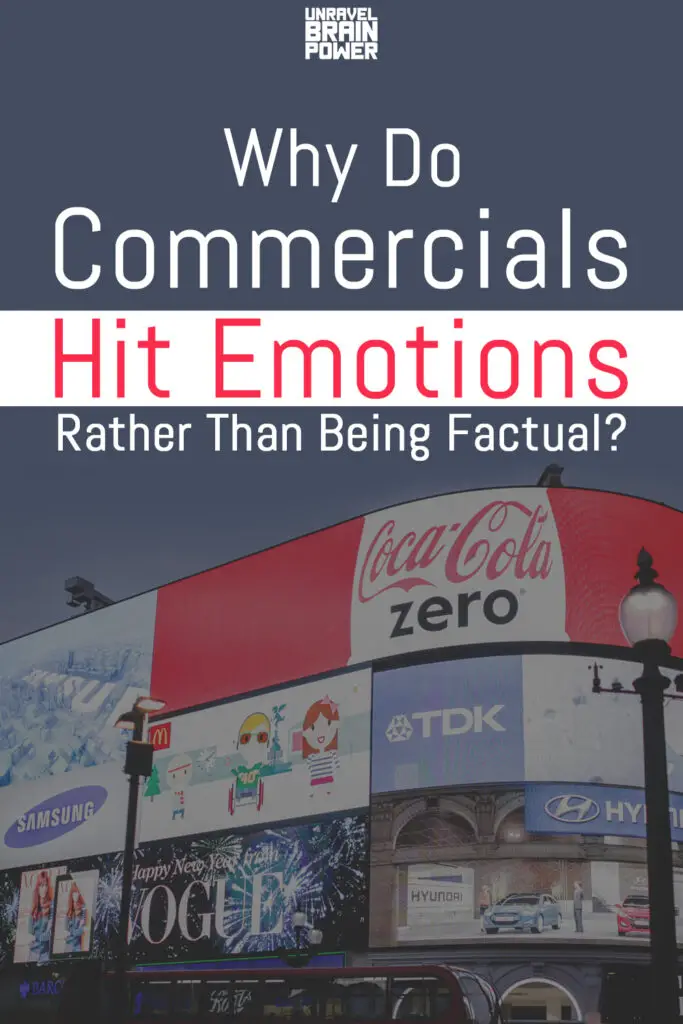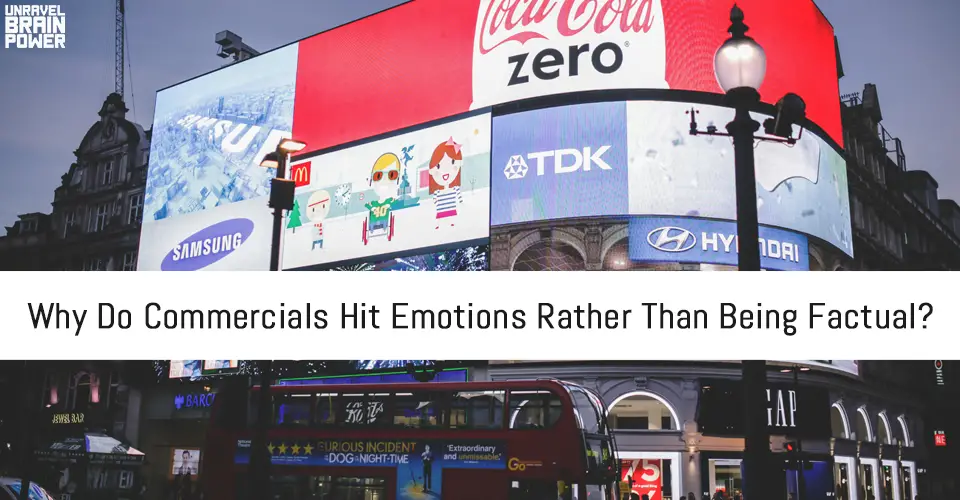Human beings are supposedly rational beings but when it comes to emotions, human beings hardly have any control over them. Even the most reasonable ones among us surrender to our feelings from time to time. Commercial designers, marketing agents, content creators, Advertisement managers – everyone in the marketing field makes use of this information to their benefit in maximizing sales.
We might be falsely led to believe that we make decisions only after considering both the perks and disadvantages of a product but in reality, we subconsciously make up our mind even before we realize we did. Advertisements use subliminal messages through powerful content which reaches people at a subconscious level and creates an emotional association with the elements used in the advert. This is why we often end up consuming products that we consciously believe we could do without. Most impulsive buying is triggered by emotions that we feel at the time of viewing an advertisement.
Under such circumstances, marketers make a profit out of people’s emotional needs. It is made clear through recent studies that human beings operate on four basic emotions (happy, sad, afraid/surprised, and angry/disgusted) which when manipulated can lead to desirable behaviors. Marketers bag the opportunity to use these emotions to promote their services. Commercials that stir up positive emotions (happiness, contentment) in viewers are usually more circulated among people hence gaining a high organic reach; commercials that trigger negative emotions like fear and unhappiness are found to be more relatable hence gaining more views. Either way, strong emotions demand to be shared and cultivated among people, making it a contagious talking topic. Take for instance the Nescafe gold commercial, laden with a heavy message that’s bound to bring happy tears to viewers’ eyes. It has a whopping 49 million views at the moment.
Alongside emotions, avert creators use color, sequence, texture, pattern, and shapes in the commercials to capture the attention of the viewers. Children’s products often use vibrant colors to capture the interest of the target audience so as to optimize sales.
Now, it is a crucial tactic for marketers to reach as many consumers as possible but this has significantly resulted in overconsumption, emotional buying, environmental degradation, and depletion of resources. Even though our emotions play a huge role in decision-making, emotions can often thwart our understanding of the difference between needs and wants, resulting in unsustainable expenditure. Not only this, advertisement designers and ad content creators are slipping down the slippery slope of deceitful advertising.
While delineating the nature of deceiving advertisements we will often come across adverts that make false or ambiguous claims or conceal true facts regarding the products. In 2015, Volkswagen was exposed by the FTC that the company had hoodwinked the buyers by selling out around 550,000 diesel-based cars with the atrocious claims that the cars were low-emission and eco-friendly. The company could have to bear a monetary penalty of about $16 billion for violating the Clean Air Act.
On the other hand, some companies will sell their products by holding back relevant and crucial information regarding the product which might help buyers decide on it. Usually, health, nutrition, food, and cosmetic manufacturers conceal facts regarding the products’ ingredients. Ben and Jerry’s ice creams label each pint with “140 calories per serving” but people fail to realize that one pint contains 4 servings! The manufacturers can clearly mention this on the product but they do not do so to increase sales. Consider someone trying to cut down her/his calorie consumption, will that person buy more than one pint if the information is included on the package?
How exactly is emotional advertising teamed with pretentious advertising a potentially harmful combination?
Emotional promotion has been scientifically proven to mislead buyers. When a misinformed advertisement is topped with a well-knit storyline that appeals to the general mass, it can only lead to greater harm. Consider the ‘apple’ advert. They use very creatively, lucid, clean and grandeur pitches to lure consumers to buy their products. The ‘larger than life’ image created by apple products that ensure a ‘royal lifestyle’ is misleading in several ways. Not only are apple products overpriced but also overhyped. They make false claims of being water-resistant but they instead have many drawbacks like limited hardware upgrade, insufficient storage capacity, fewer application options, and outdated specifications.
The harm here is you end up buying a cost-ineffective product that might not serve your purpose just for the sake of looking chic. The harm done by concealing facts and exaggerating emotions in commercials is much higher in necessity products like food, nutrition, bedding, electric appliances, shelter and clothing. Food industries hiding information regarding calorie, salt, and sugar content can lead to serious health damages for vulnerable consumers. Cars, refrigerators, air-conditioners falsely claiming to be eco-friendly can degrade air quality as such claims automatically hike up sales.
By now it’s a no-brainer why commercials use people’s emotions as a tool to sell products. It is mainly because when we are acting on our emotions we are more likely to make unreasonable choices. Emotions make us put logic on the back burner when we are making a decision. Though a hint of instinctual inclination is necessary to make a better choice but to be swayed by emotions only makes us choose indifferently.
Advertising agents and creators should opt for a wholesome protocol to balance creativity, emotionality, subliminal messages, and genuineness in their commercials. They should refrain from deceiving people with pretense and false claims such that it is beneficial for both the agency as well as the consumers.
Read more
Understanding Fashion Psychology and the Growing Trend of Fashion Among Adolescents
Pin it


Why is the practicality missing from advertisements nowadays? The author speaks about how advertisements fool us to believe we need more than we really do.


